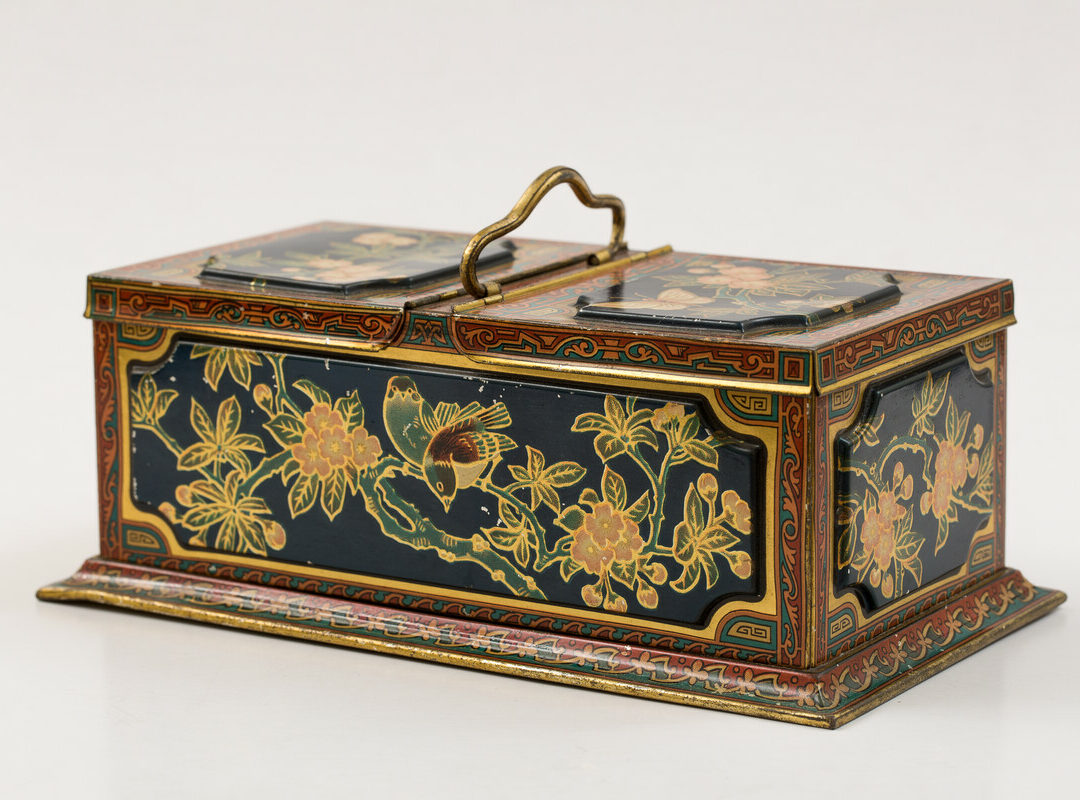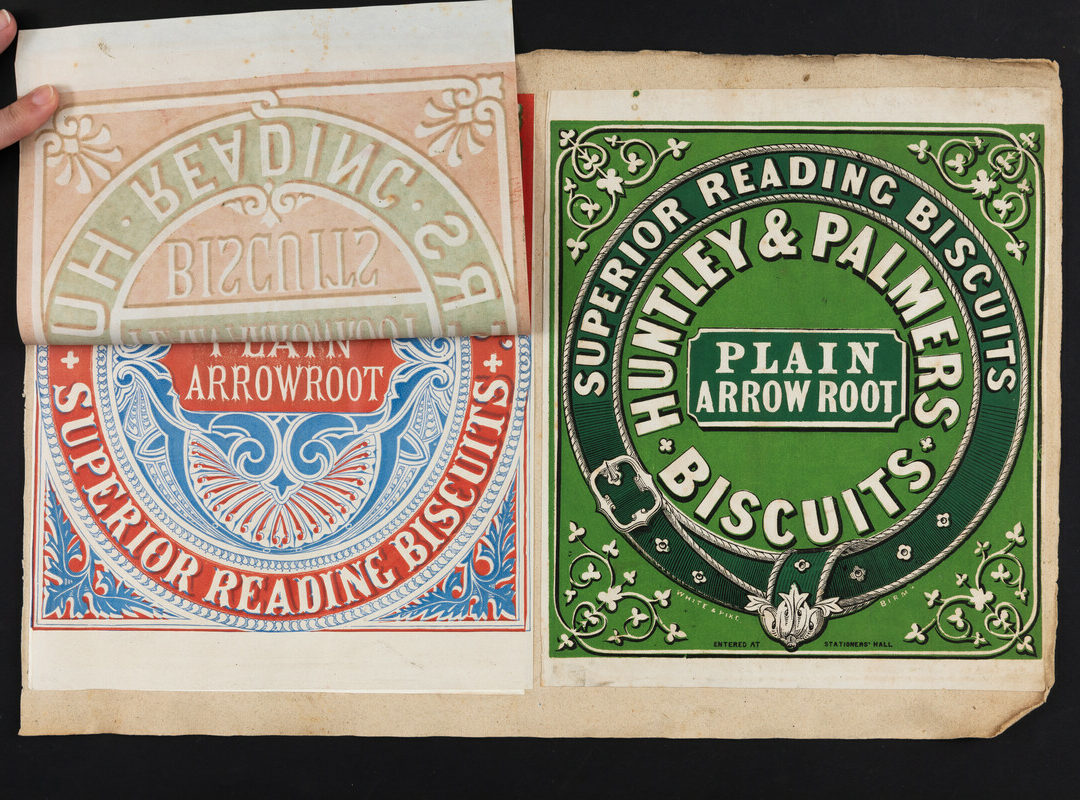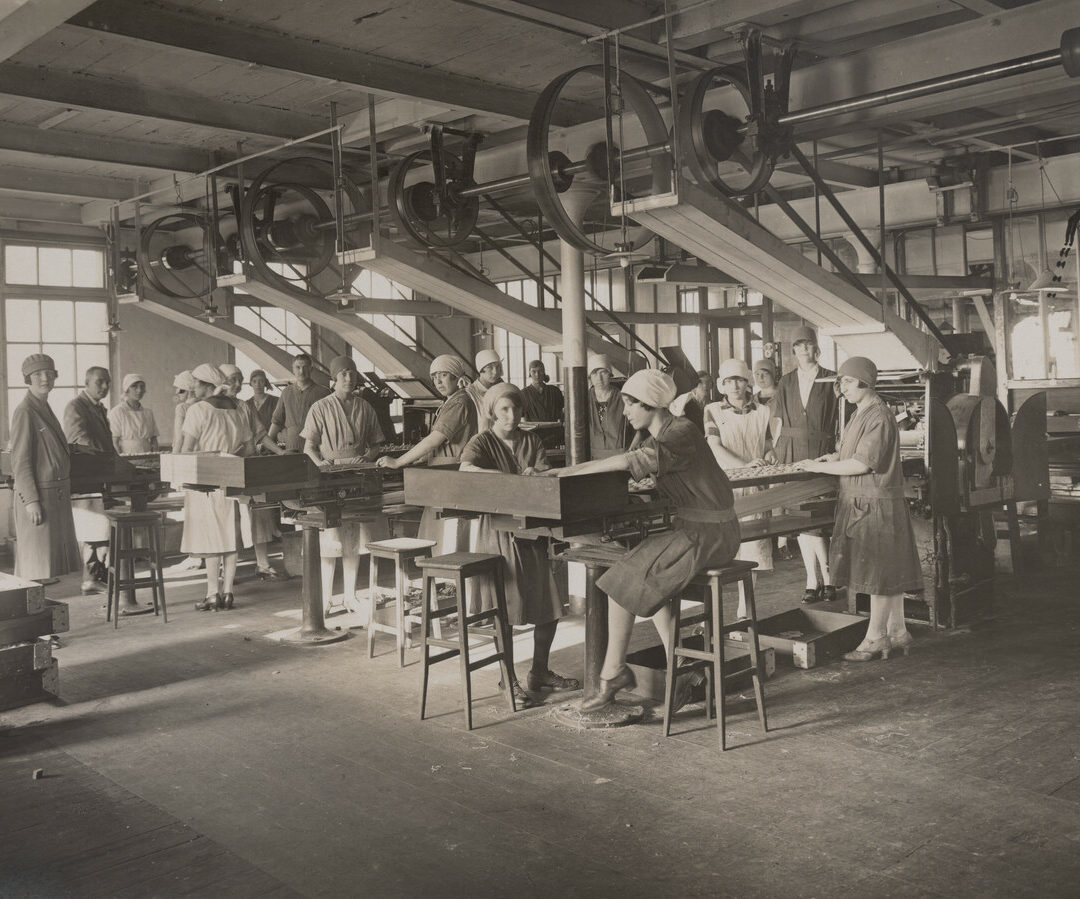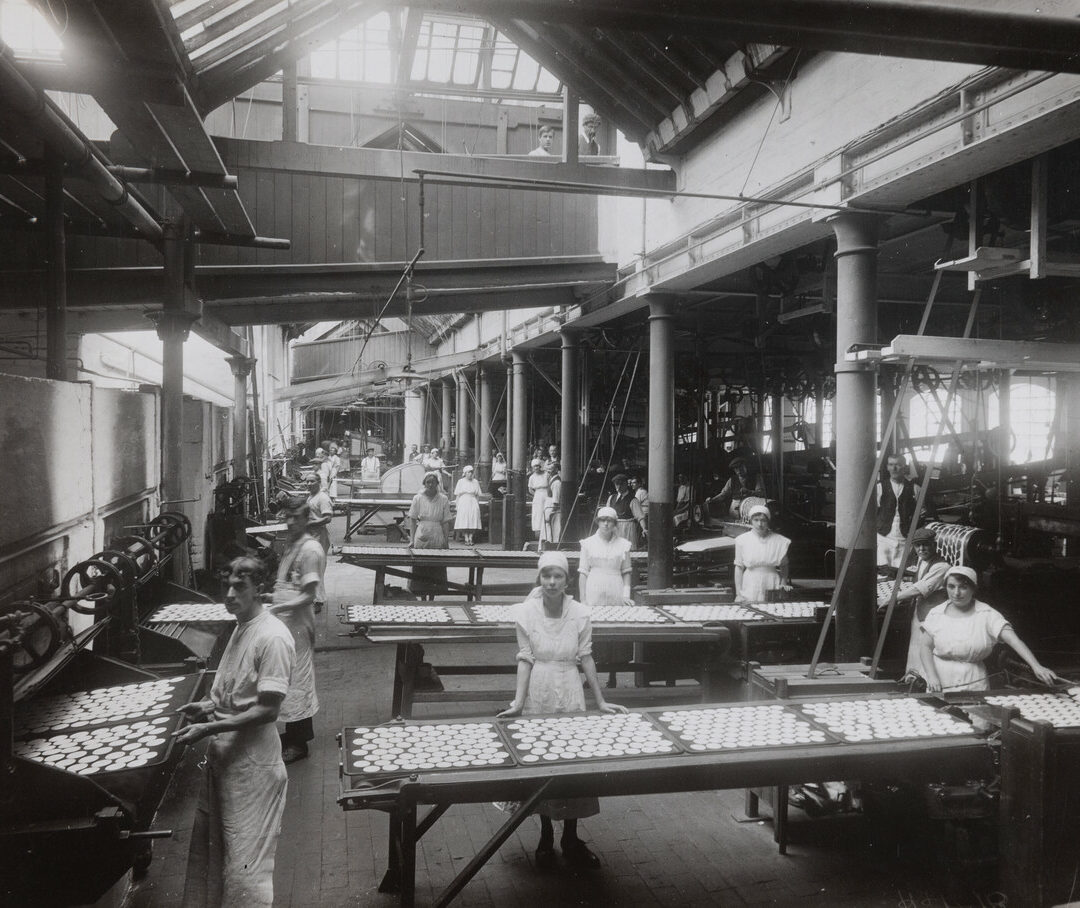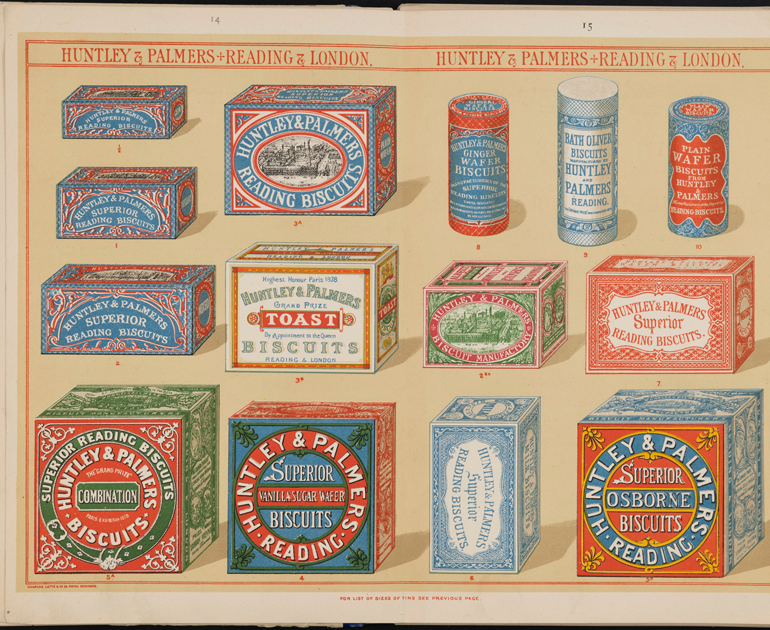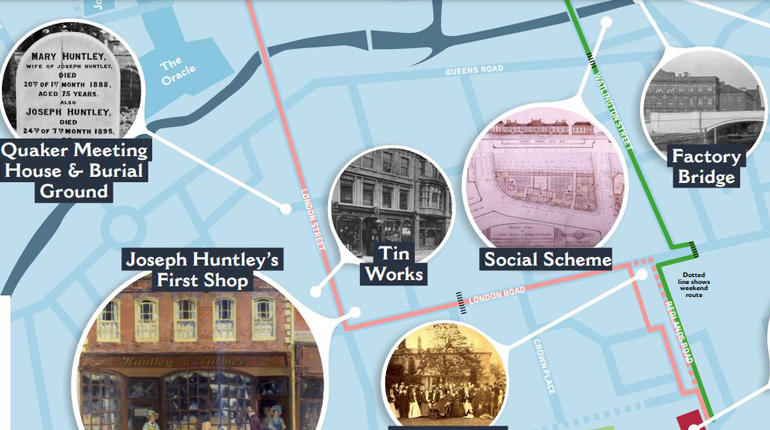Heritage bakes: three historical biscuit recipes from our collections
Explore and follow three heritage recipes for baking historical biscuits, including an original recipe by Huntley & Palmers.
Throughout 2022, Reading has celebrated the anniversary of 200 years since a small baker’s shop first opened its door on Reading’s London Street and marked the first chapter of the story of Huntley & Palmers, which would become—through the course of the 19th century—the largest biscuit company in the world.
Huntley & Palmers defined modern Reading. From the work of its factory floor to the global commercial operation, Huntley & Palmers created thousands of local jobs, reshaped the town’s built environment through ambitious feats of architecture and engineering, and left a biscuit-shaped legacy that we celebrate throughout Reading today. Whether seeing a film at the recently-opened Reading Biscuit Factory, an independent cinema and arts space, or exploring the brilliant collection of biscuit tins at Reading Museum’s Huntley & Palmers Gallery, you don’t have to go far to find biscuit crumbs. We’ve made this search easier than ever before with the Biscuit Crumb Trail (free to download or collect from The MERL or Reading Museum).
Today, the University of Reading’s Special Collections holds the Huntley & Palmers Archive. It’s one of Huntley & Palmers’ many connections to the University of Reading and its museums, including the fact that The MERL building is the former home of Andrew Palmer! The collection offers a complete history of the firm and all aspects of its work, including financial and general management, legal papers, contracts, patents, personal correspondence, personnel lists, marketing, and much more.
Of course, the Huntley & Palmers Archive also features the firm’s once top-secret and widely treasured recipes. For the biscuit-making magic the firm made possible at an unprecedented scale, it is a library of spell books. These recipes were so top secret that some of the ingredients aren’t even identified. Among commonly found ingredients, one recipe that we have to share with you below simply refers to ‘Stuff’, Huntley & Palmers’ original spice mix!
In this blog, in the spirit of Huntley & Palmers, explore and have a go at recreating three heritage biscuit recipes from our archives and collections. The first recipe is a Huntley & Palmers original (complete with a top-secret Huntley & Palmers ingredient). The second comes from a family cookbook published in 1875 (and enjoys a particular flair for naming the treats it contains). The final recipe dates to the Second World War, a jam biscuit from a Ministry of Food pamphlet in The MERL library. If you’re feeling inspired, share your creations with us on social media!
Recipe #1: Huntley & Palmers’ Traveller Biscuits
When Joseph Huntley opened his first baker’s shop in 1822 (indeed, the first ingredients of the Huntley & Palmers mix), Reading’s London Street was a busy coaching road. The Turks around the corner was an important coaching inn, as was the George Hotel further into town. Both formed important resting points for travellers and merchants journeying into London, and it’s plausible that many of the bakery’s first customers would have been travellers looking for a bite to eat.
To that end, it seems only fitting to begin with a recipe for Huntley & Palmers’ Traveller Biscuits: a savoury snack to enjoy on the road!
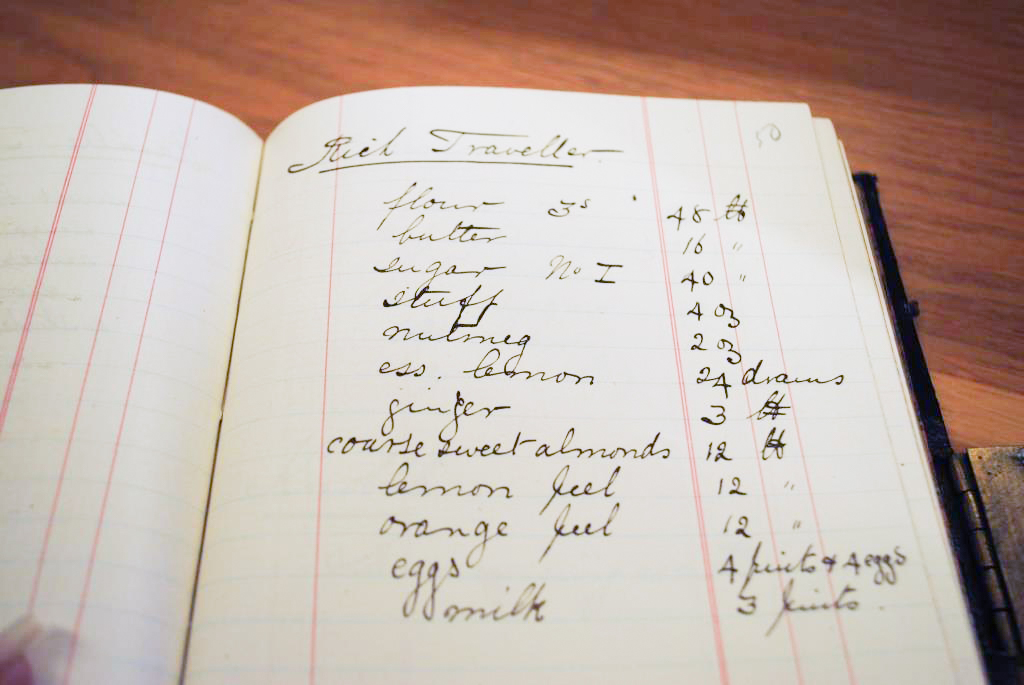
The ingredients
48 lbs flour
16 lbs butter
40 lbs sugar (caster?)
4 oz stuff (we don’t know what this was. It may be a ‘secret’ spice mix as the quantity is very small)
2 oz nutmeg
24 drams lemon essence
3 lbs ginger
12 lbs coarse sweet almonds
12 lbs lemon peel
12 lbs orange peel
4 pints and 4 eggs
3 pints milk
Our thoughts
These amounts are clearly for biscuit production on an industrial scale, so you’ll need to scale down accordingly! Below, we’ve attempted to help with this by reducing the measurements and replacing them with their metric equivalents. The process has tested our maths to the limit, even with the help of Google, and we gave up calculating the ounces and drams scientifically!
We should warn you: we’re yet to test the recipe at home. Intuition and good baking sense are encouraged.
400 g flour
135 g butter
330 g caster sugar
1/2 tsp mixed spice (‘Stuff’)
1/4 tsp nutmeg
A couple of drops of lemon essence
100 g ground almonds
100 g lemon peel (candied/grated?)
100 g orange peel
1 egg (we’ve been generous here)
30 ml milk
Recipe #2: Threadneedle Street Biscuits
In 2014, one of our volunteers spent a morning looking for recipes in our library collection. Their finds included: a handwritten recipe book featuring newspaper cuttings from the 1920s; an account book for a farm in Sutton Scotney, Hampshire, used from 1854 to 1865 and repurposed into a recipe book from 1882 to c. 1913; and an over 100-year-old recipe for macaroons!
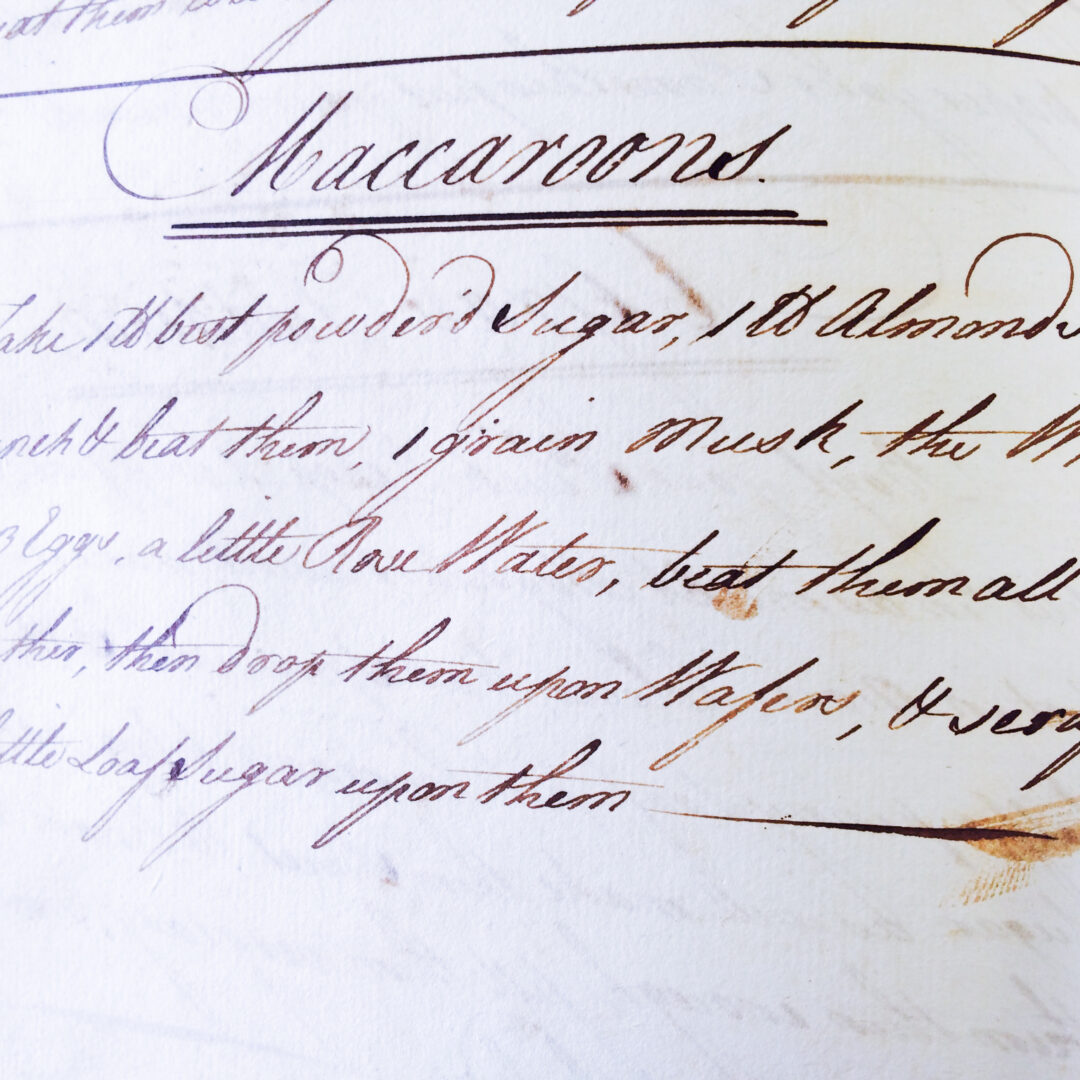
However, the recipe that caught our attention was for Threadneedle Street Biscuits, simply because we were intrigued by the name. Threadneedle Street is the location in London of the Bank of England, but the connection between the biscuits and the place remains unclear. The recipe appears in Modern Cookery for Private Families by Eliza Acton (1875). It is listed among Plain Dessert or Wine Biscuits, Ginger Biscuits and Good Captain’s Biscuits!
The ingredients
2 lbs flour
4 oz sugar
3 oz butter
1 pint milk
Optional: ½ teaspoon carbonate of soda; caraway seeds
Mix with two pounds of sifted flour of the very best quality, three ounces of good butter, and work it into the smallest possible crumbs; add four ounces of fine, dry, sifted sugar, and make them into a firm paste with new milk; beat this forcibly for some with a rolling pin and when it is extremely smooth roll it the third of an inch thick, cut it with a small square cutter, and bake the biscuits in a very slow oven until they are crisp in the centre: no part of them should remain soft. Half a teaspoonful of carbonate of soda is said to improve the, but we have not put it to the test. Caraway seeds can be added when they are liked.
Recipe #3: Jam biscuits from the Ministry of Food, 1940
The recipes below come from two Ministry of Food pamphlets within the MERL Library collections. Together, they offer a simple biscuit recipe and more complex instructions for making jam from scratch!
Both pamphlets used are from the late 1940s post-war era. As a word of caution, they contain misogynistic and prejudicious tips for the ‘contemporary housewife’. At the time of the recipes’ publication, many women were involved in directly supporting the war effort on the ground in a range of contexts: from helping to create munitions on production lines, to supporting agricultural work as members of the Women’s Land Army.
Interestingly, notice how the biscuit recipe focuses on ‘making the most of the sugar’ and the lengths the jam recipe takes to highlight the economising of the cooking process. Both these recipes were published and distributed at a historical moment when sugar was scarce due to rationing. You can learn much more about rationing, how it worked, and the different amounts each person received on our blog.
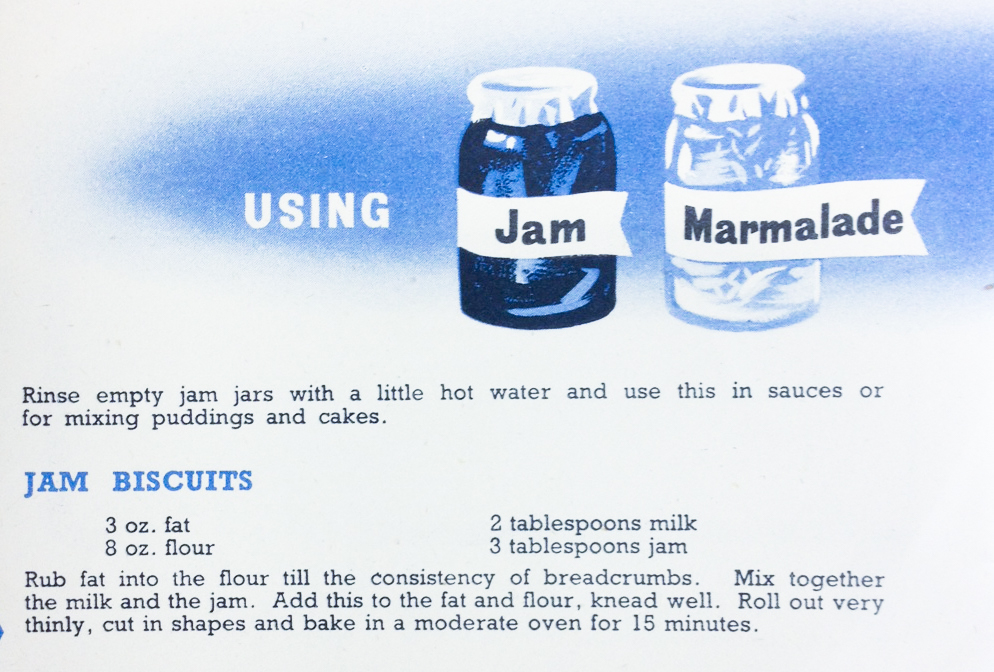
Using Jam and Marmalade
(from Ministry of Food Leaflet No. 21, Dec. 1946, MERL Library Pamphlets 7060 BOX 2/04)
Rinse empty jam jars with a little hot water and use this in sauces or for mixing puddings and cakes.
Jam Biscuits
3 oz. fat
8 oz. flour
2 tablespoons milk
3 tablespoons jam
Rub fat into flour till the consistency of breadcrumbs. Mix together the milk and the jam. Add this to the fat and flour, knead well. Roll out very thinly, cut in shapes and bake in a moderate oven for 15 minutes.
(All spoons are level and all recipes for four.)
Jam Making
(from Ministry of Food Leaflet No. 28, 1946, MERL Library Pamphlets 7060 BOX 2/31)
Housewives who have saved sugar to make home-made jam are advised to follow very carefully the instructions given below. It is foolish to risk wasting sugar and fruit by using so-called “economical” recipes. If the jam is wanted for keeping it is most important not to economise with sugar, but if the jam is to be eaten within a few weeks a little less sugar than that given in the recipes may be used or see instructions for “Low Sugar Jam.”
- Fruit should be fresh and firm-ripe. Over-ripe fruit should NOT be used.
- Before the sugar is added, the fruit should be cooked slowly until it is quite tender, with just sufficient water to prevent it burning. Stir occasionally to prevent sticking.
- SUGAR is stirred into the softened fruit until dissolved and the jam then boiled rapidly until setting point is reached. Do not have the pan too full or the jam will boil over at this stage. Stir occasionally to prevent sticking.
- Removing Scum. Do this only when boiling has finished. Constant skimming is wasteful and unnecessary.
- Testing for setting point. Begin to test after about 10 minutes of rapid boiling (after sugar has been added). Remove pan from heat during testing.
To test: place a little jam on a cold plate; if setting point has been reached, the jam will wrinkle when pushed with a finger.
- Filling the Jars. To prevent fruit rising in the jars, the jam should be allowed to cool slightly in the pan.
- Put on wax disks while hot, and press down over the surface.
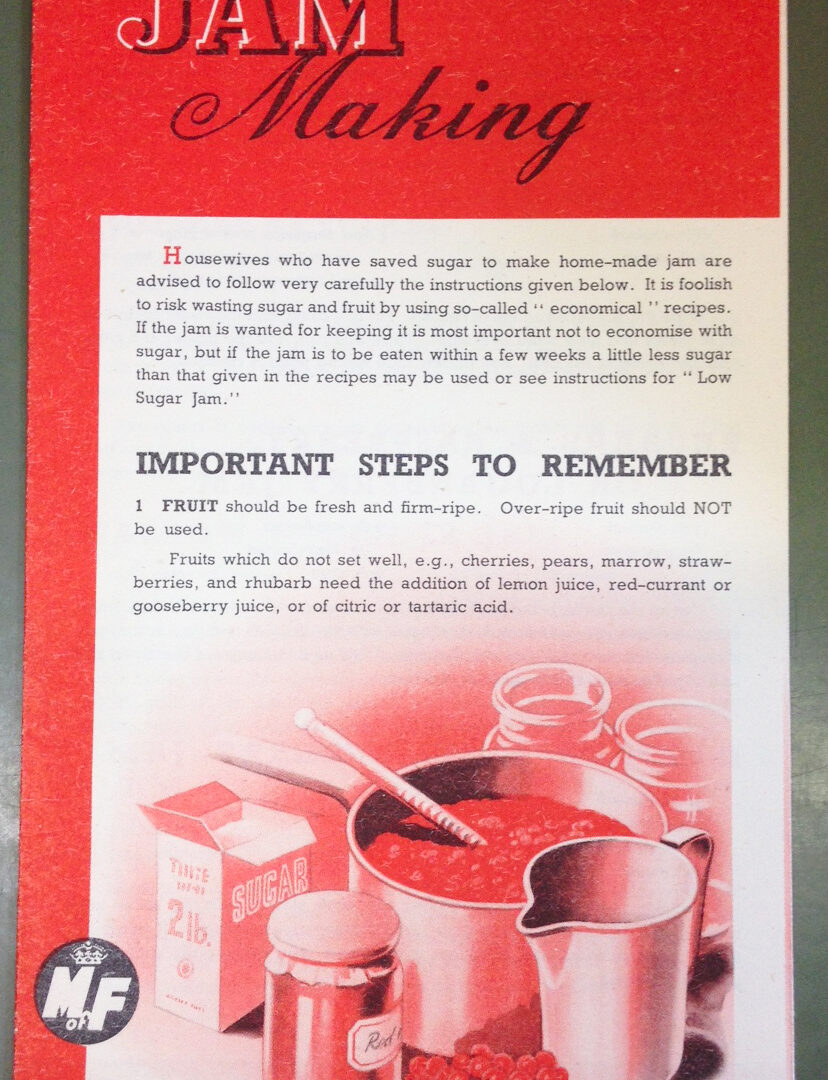
From the various types of jam recipes outlined in the recipe leaflet, we chose raspberry jam.
Raspberry Jam
6 lbs raspberries
6 lbs sugar
Put the fruit in the pan and cook slowly until some juice has come out of the fruit. Add the sugar, stir until it is dissolved, and boil rapidly until setting point is reached.
How the cookie crumbled
We hope you can take some culinary inspiration from these three different recipes, which each reflect—in different ways—the times and contexts in which they were first shared and followed. If you get creative, whether cooking by the book or making tweaks of your own, we would love to hear what you make, so please reach out on social media or by email.
Below, learn more about Biscuit Town 200, or check out our other blogs bringing you recipes straight from the archives and collections at The MERL and the University of Reading.

